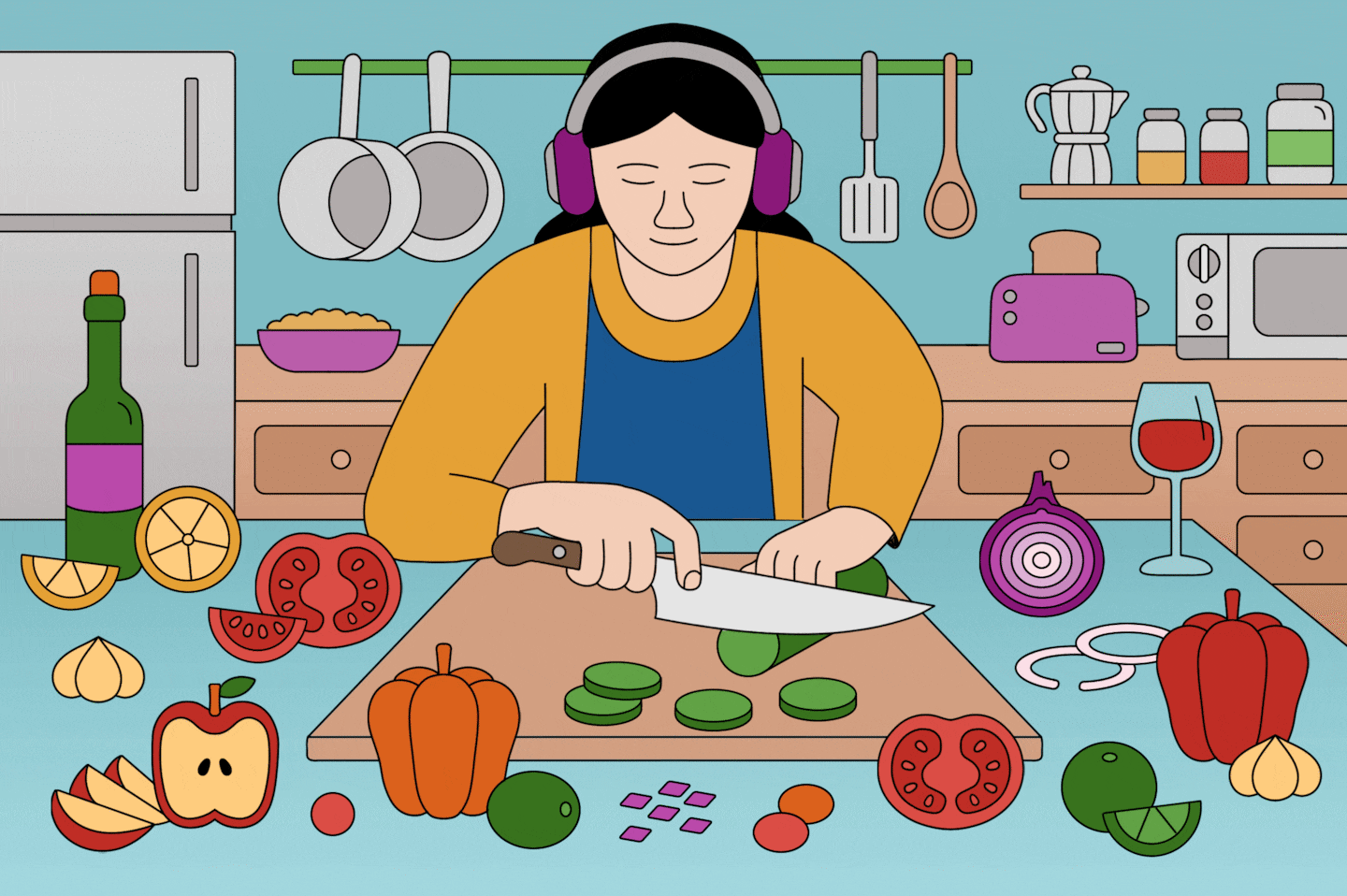The French term “julienne” means to cut something into a thin, uniform strip. Sometimes this is called a matchstick cut; Chinese chefs call it a strip cut. If you find yourself under the tutelage of a strict, very traditional chef, they will expect each julienned piece of vegetable to be a cuboid that is 2 inches long, 1/8 of an inch wide and 1/8 of an inch tall. (These measurements may vary slightly, depending on whether you’re using the metric or imperial system — and sometimes on the ingredient and its intended use.) In a home setting, there’s no need to take out your ruler.
Other cooks may disagree, but I think julienne is a sort of bonus cut. Unlike with mincing or dicing, julienning is often more of a stylistic choice. It’s nice to know how to do, and the matchstick-size pieces look quite elegant.
Practice your precision in this colorful Vegetable Linguine, which calls for julienned carrots, bell peppers and leeks.
Carrots | Your first goal is to cut a long, roughly cylindrical carrot crosswise into more manageable pieces, perhaps 3 to 5 inches long. Set all but one piece of carrot aside, to give yourself room to work. Slice a thin strip off the length of one of the carrot pieces, just to take off its round edges. Then put the piece cut-side-down on your cutting board. Now that you’ve stabilized the cylinder, you can begin to julienne: Working lengthwise, cut down into the carrot to produce approximately 1/8- to 1/4-inch planks. Stack those planks, then cut down again, every 1/8 to 1/4 of an inch, to create matchstick-size pieces. Bonus: You can use this same method for zucchini, cucumbers, parsnips, asparagus, eggplant or any other similarly shaped vegetable or fruit. An easier though less precise way to julienne a cylindrical vegetable is to slice it on a bias, stack those oval-shaped pieces, then cut them into strips. (See the animation above.) You won’t get the same neatly squared-off edges, but your pieces will be close enough to the size and shape you need.
Bell peppers | There are a few ways to julienne a bell pepper, but I like using its empty exterior to my advantage. If you slice off the top, taking care to pluck out the core and seeds, and then slice off the bumpy bottom, you’re left with a hollow cuff. Make one cut down through it, from top to bottom, to flatten it into a slab of pepper. Then slice matchstick strips across its length. Depending on the size of your pepper, and the size you want your matchsticks, you may need to cut the strips in half.
Leeks | Almost every time a recipe calls for leeks, it’s referring to the white and pale green parts. The dark green leaves at the top are fine for stock, but they’re too fibrous to cook down in a pan, so cut those off before you begin. You can also trim the stem end if it’s especially dirty. Then wash it inside and out. The only way I know how to ensure I’ve gotten all of the grit out of the inside of a leek is to cut it in half lengthwise and soak or rinse it with cold water, flipping through the layers like a book to let the dirt run off. Dry these off, and you’re ready to julienne: Cut the leek halves into more manageable pieces, or into the length you’d like for your matchsticks. Then, working with one piece at a time, cut-side-down, slice the lengths into thin strips in the direction of the stem’s growth. Your pieces will not all be precisely the same size, and that’s just fine.
